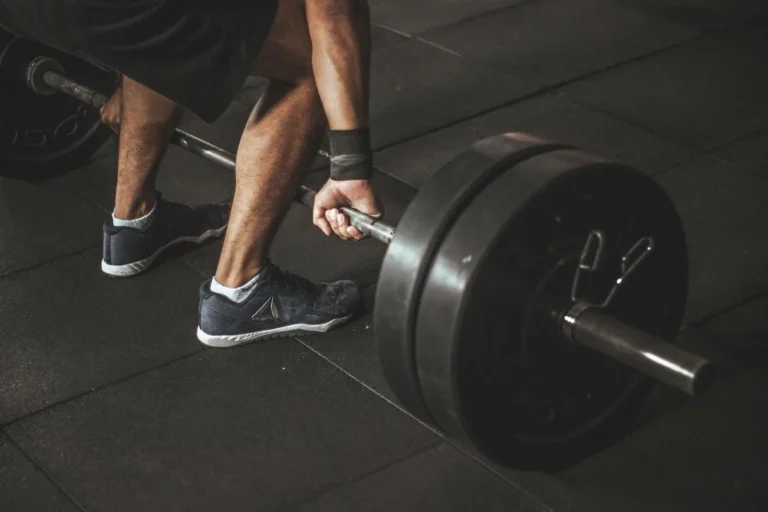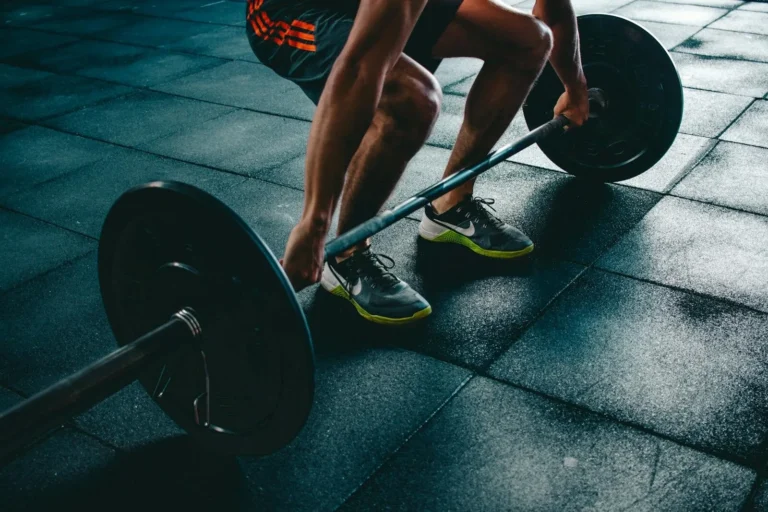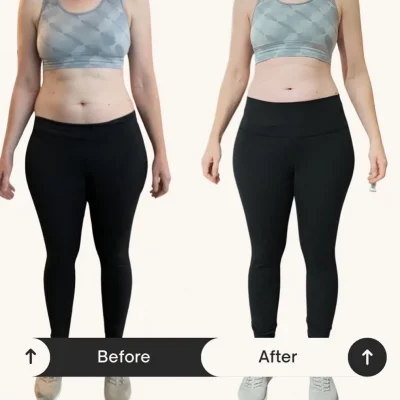There’s a common belief that lifting weights alone can effectively contribute to weight loss. However, while resistance training is an excellent way to build muscle and boost your metabolism, relying solely on weights may not yield the results you desire. Integrating cardio exercises and mindful nutrition into your routine will enhance your weight loss efforts and promote overall health. In this post, we will explore how lifting weights fits into your weight loss journey and what additional steps you can take to achieve your goals.
Key Takeaways:
- Weightlifting can contribute to weight loss, but it is most effective when combined with a balanced diet and other forms of exercise.
- Building muscle through weight training can increase your resting metabolic rate, leading to more calories burned even at rest.
- Focusing solely on weightlifting without addressing nutrition and cardio may limit your overall weight loss results.
The Science of Muscle Gain and Metabolism
Understanding the relationship between muscle gain and metabolism is imperative for maximizing weight loss efforts. Muscle tissue is metabolically active, meaning it burns calories even at rest. Every pound of muscle can burn approximately 6 calories a day, while fat tissue burns only about 2. As you lift weights and increase your muscle mass, you effectively enhance your body’s ability to burn calories, leading to improved weight management and a potential increase in your basal metabolic rate.
How Weightlifting Affects Caloric Burn
Weightlifting stimulates an increase in caloric burn both during and after your workout. This phenomenon, known as Excess Post-exercise Oxygen Consumption (EPOC), allows you to continue burning calories long after you leave the gym. Studies show that engaging in high-intensity resistance training can boost your metabolic rate by as much as 15% for several hours post-exercise, significantly contributing to daily caloric expenditure.
The Role of Muscle Mass in Weight Management
A higher ratio of muscle mass to fat mass plays a significant role in effective weight management. As you increase your muscle mass through weightlifting, your body uses more energy to maintain that tissue. This means even on days you don’t exercise, your body will require more calories to sustain your muscle, thereby aiding in weight loss or weight maintenance. Over time, this can lead to a more favorable body composition, reducing overall fat percentage and improving health outcomes.
Having more muscle mass is not just about aesthetics; it directly impacts your body’s ability to regulate weight. For instance, research indicates that individuals with higher muscle mass tend to have lower body fat percentages and better insulin sensitivity. This can mitigate the risk of obesity-related diseases and promote a healthier lifestyle. Additionally, as you lift weights and gain muscle, the increased demand for calories can naturally create a caloric deficit if your diet remains in check, facilitating weight loss or maintenance.
Misconceptions About Weightlifting and Weight Loss
Many people harbor misconceptions regarding weightlifting and its efficacy for weight loss. A common misunderstanding is that lifting weights exclusively will result in substantial fat loss. In reality, as you progress in lifting, the balance between strength training and aerobic exercises is necessary for optimizing fat burning while maintaining muscle mass. Relying solely on weights can overshadow the benefits of calorie burning through diverse exercise forms, leading to unrealistic expectations about results.
The Myth of ‘Lifting Heavy Equals Losing Weight’
Weightlifting focuses on building strength rather than solely promoting weight loss; thus, lifting heavy weights doesn’t guarantee a slimmer figure. In fact, heavier lifting can sometimes lead to muscle gain, which might not immediately reflect on the scale. You might notice a greater change in body composition—a more toned look—as a result of weightlifting, rather than drastic weight loss.
Why Cardio Alone Isn’t the Only Answer
While cardio exercises play a significant role in burning calories, relying solely on them can lead to muscle loss and slower metabolism, counteracting your weight loss efforts. Incorporating weightlifting not only helps in preserving muscle mass but also boosts metabolism through the afterburn effect, which allows you to continue burning calories even after your workout. The combination of both cardio and weight training is necessary for sustainable weight loss and body transformation.
Cardio may effectively burn calories in the short term, but it often fails to address long-term body composition goals. Studies show that individuals who engage in a balanced fitness routine, including both weightlifting and cardio, tend to maintain weight loss more successfully than those who focus on cardio alone. By enhancing muscle strength, you elevate your resting metabolic rate, making weight maintenance much more attainable. Ultimately, the best approach incorporates a mix of both, allowing you to experience the benefits of both calorie burn and muscle preservation.
The Relationship Between Diet and Strength Training
A successful weight loss journey hinges not only on strength training but also on a well-balanced diet. The right nutrition will fuel your workouts and aid recovery. By supplying your body with imperative nutrients, you create an optimal environment for muscle growth while also promoting fat loss. Studies show that individuals who combine lifting weights with a proper nutritional plan achieve better results compared to those who solely rely on exercise.
Nutritional Foundations for Effective Weight Loss
Your diet should focus on whole, nutrient-dense foods that support your energy needs and muscle recovery. Prioritize lean proteins, healthy fats, and complex carbohydrates to ensure you have the fuel necessary for your strength training sessions and daily activities. Incorporating a variety of fruits and vegetables will provide imperative vitamins and minerals, preventing deficiencies that can derail your progress.
Timing and Quality of Food Intake
The timing of your meals can significantly impact your performance and results. Consuming the right foods before and after workouts can enhance muscle recovery and growth. By meal prepping or planning your intake around your training schedule, you can optimize your fuel sources for maximum benefit.
Strategically timing your meals helps ensure that your body receives the nutrients it needs when it matters most. For instance, a mix of protein and carbohydrates consumed within 30-60 minutes post-workout can replenish glycogen stores and kickstart muscle repair. On workout days, eating a balanced meal a few hours beforehand primes your body for high performance. Likewise, avoiding heavy meals right before a workout can prevent discomfort and enhance your training efficiency. The quality of the food you choose, combined with proper timing, can significantly accelerate your progress towards your weight loss goals.
Building an Effective Weightlifting Routine for Weight Loss
Designing an effective weightlifting routine tailored for weight loss requires a focus on compound movements, progressive overload, and a balanced schedule. Aim for sessions that combine different muscle groups, like squats, deadlifts, and bench presses, with at least three days of training per week. Incorporate a mix of high-intensity training and steady lifts to keep your metabolism revved up. Your routine should also provide adequate recovery time to ensure muscle growth and prevent injury. Stay consistent with workouts as you track your personal progress to achieve lasting results.
Key Weightlifting Techniques to Maximize Fat Loss
Focusing on specific weightlifting techniques can significantly enhance your ability to shed fat. Incorporate supersets, which involve performing two exercises back-to-back without rest, pushing your body to work harder and burn more calories. Include multi-joint exercises like pull-ups and lunges that engage multiple muscle groups, increasing overall energy expenditure. Implementing high-rep sets with moderate weights can elevate your heart rate, further promoting calorie burn during and after your workouts.
The Importance of Consistency and Progress Tracking
Tracking your workouts and maintaining consistency in your routine are fundamental components of an effective weightlifting strategy. Regularly logging your exercises, weights, and repetitions allows you to identify patterns and adjust your program based on performance. Set specific, achievable targets to keep motivation high. For example, aim to lift more weight or increase your repetitions weekly. This method not only creates a clear pathway to success but also provides tangible evidence of your progress, instilling a sense of accomplishment that fuels your commitment.
Realistic Expectations: Timeframes and Results
Weight loss through weightlifting alone requires patience and setting realistic goals. Expect to see the first noticeable changes in your body composition within 4 to 8 weeks, with consistent training and a healthy diet. However, sustainable weight loss often takes time, so focusing on gradual progress rather than rapid transformations will yield better long-term results.
Understanding the Timeline of Progress
Gaining muscle and losing fat is a gradual process that unfolds over weeks and months. Initially, you may notice improvements in strength and endurance, while the visual changes in your body may lag behind. Tracking your progress through measurements or photos can help maintain motivation during this transitional phase, as muscle gain may counteract weight loss on the scale.
Weightlifting vs. Other Forms of Exercise: What to Expect
While weightlifting can be effective for weight loss, it often differs from more traditional cardio workouts regarding immediate results. Cardio tends to burn more calories during the session, but weightlifting promotes greater muscle growth, enhancing metabolic rate over time and leading to more significant fat loss. You may find that incorporating both forms into your routine provides the best results.
More so, weightlifting can lead to improvements in body composition that aren’t always reflected on the scale. For example, an individual who lifts weights may not see drastic weight loss at first but could shed body fat while gaining muscle. This change may reflect as a decrease in inches or improved definition. A diverse workout routine that blends weightlifting and cardio allows for the best of both worlds, balancing immediate calorie burn with long-term metabolic adaptation.
Conclusion
Hence, while lifting weights alone can contribute to weight loss, it’s important to recognize that combining strength training with a balanced diet and aerobic exercise will yield the best results. Weightlifting can build muscle, boost your metabolism, and help you burn calories, but integrating other forms of physical activity and managing your nutrition will optimize your efforts. By understanding this holistic approach, you can effectively achieve your weight loss goals while enhancing overall fitness and well-being.
Q: Can lifting weights alone help me lose weight?
A: Yes, lifting weights can contribute to weight loss, especially when combined with a balanced diet. While strength training primarily focuses on building muscle, it also increases your resting metabolic rate, meaning you’ll burn more calories even when you’re not exercising. However, for optimal weight loss, it is beneficial to incorporate cardiovascular exercises and maintain a healthy eating plan.
Q: How does lifting weights affect body composition?
A: Weight lifting can significantly improve body composition by increasing muscle mass while reducing fat mass. As you gain muscle, your body becomes more efficient at burning calories, which can lead to weight loss over time. Additionally, having more muscle can improve your overall appearance, making you look leaner, even if the scale does not show a significant drop.
Q: Can I lose weight by lifting weights without doing any cardio?
A: While it is possible to lose weight by lifting weights alone, incorporating some form of cardiovascular exercise can enhance results. Cardio helps to burn calories during the workout and promotes heart health. Lifting weights focuses on muscle growth and metabolism, so combining both types of exercise can provide a more comprehensive approach to weight loss and overall fitness.










































